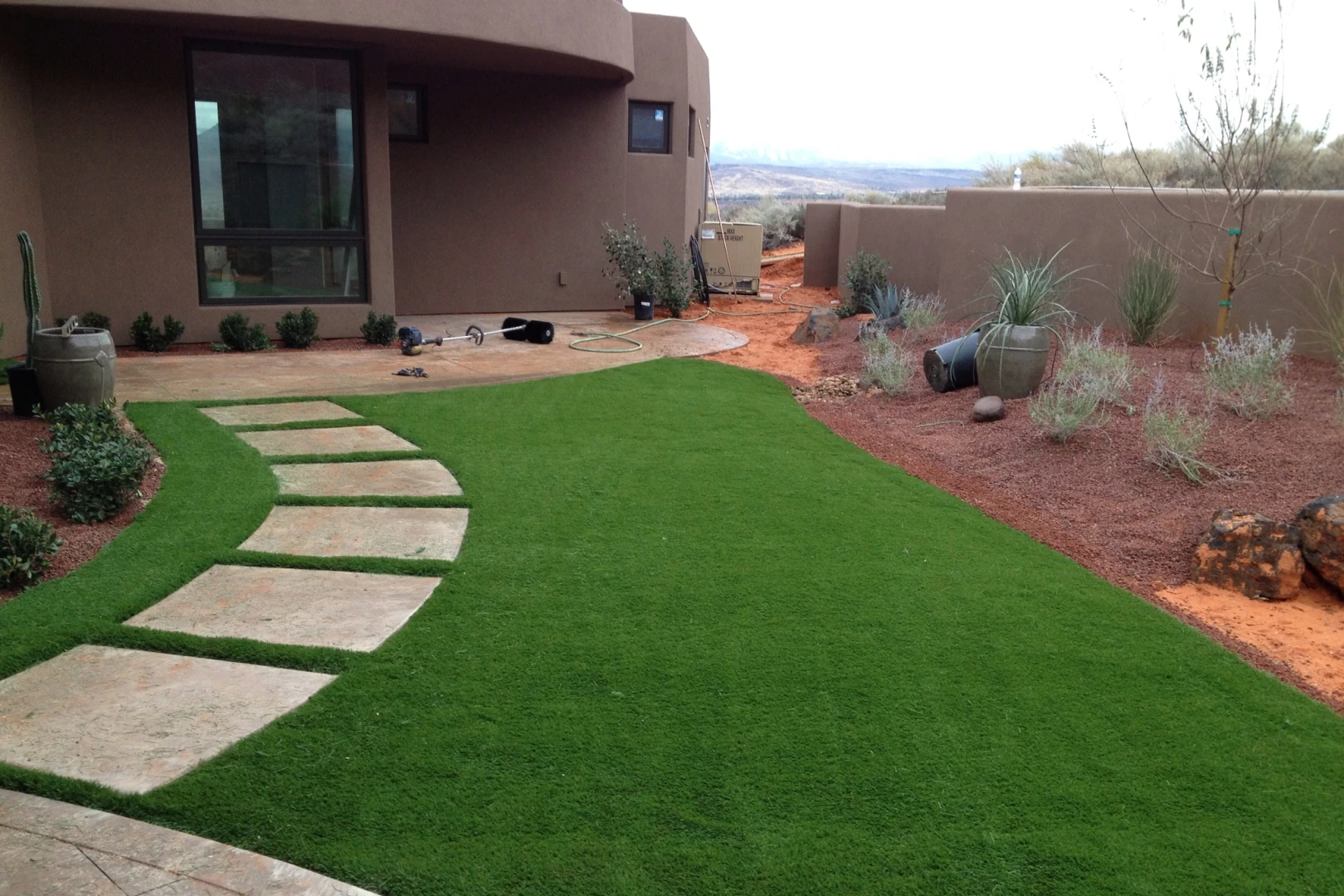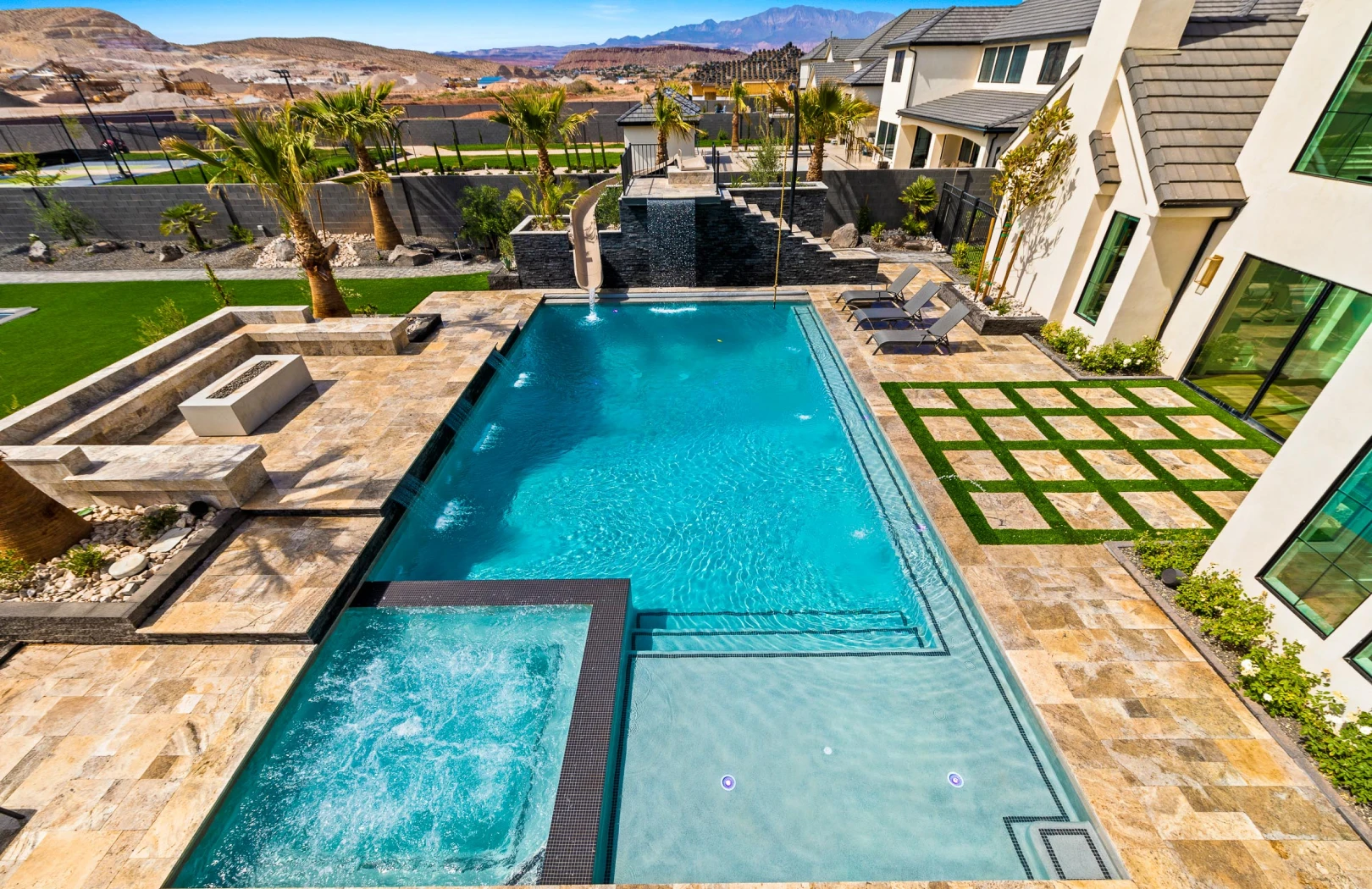Fake grass, also known as artificial grass or turf, has become increasingly popular for homeowners and businesses seeking an appealing, low-maintenance alternative to natural lawns. With the right approach, you can achieve a perfect installation that will transform your space and minimize upkeep. Here’s your step-by-step guide to successfully installing fake grass.
Understanding the Basics of Fake Grass Installation
Before you dive into the installation process, it’s important to grasp why proper installation is essential. Poor installation can lead to uneven surfaces, drainage issues, and a shorter lifespan for your turf. That’s where EcoGreen’s expertise shines; we ensure that the installation process is handled right from the start. Our team is trained to identify the unique challenges of each site, ensuring that your artificial grass not only looks great but also performs well under various conditions.
The Importance of Proper Installation
When it comes to fake grass, correct installation is pivotal for aesthetics and functionality. A proper installation ensures that water drains effectively and that the turf looks natural and inviting. An experienced installer like EcoGreen can help you avoid common pitfalls that can lead to costly repairs down the line. For instance, improper base preparation can result in uneven settling, which may cause unsightly bumps and dips. Additionally, without the right infill materials, your grass may not have the necessary support to stand up to foot traffic, leading to premature wear and tear.
Types of Fake Grass for Different Uses
Not all artificial grass is created equal. Depending on the intended use—be it a pet-friendly area, a children’s play zone, or a sports field—the right type of turf must be selected. EcoGreen offers a variety of options tailored to meet diverse needs, ranging from soft fibers for play areas to durable options for sports applications. For instance, our pet-friendly turf features antimicrobial properties to reduce odors and is designed for easy cleaning, making it a practical choice for pet owners. Meanwhile, our sports-grade options are engineered to withstand intense activity, providing a safe and reliable surface for athletes.
Moreover, selecting the right color and blade height can significantly enhance the overall look of your landscape. EcoGreen provides a range of shades that mimic natural grass, allowing you to choose a style that complements your home or business. The blade height can also affect the feel and appearance of the turf; taller blades may provide a lush, full look, while shorter blades can create a more manicured appearance. By understanding these nuances, you can make an informed decision that aligns with your aesthetic preferences and functional requirements.
Gathering Your Installation Tools and Materials
Having the right tools and materials at your disposal will streamline the installation process. You wouldn’t want to be halfway through the project only to realize you’re missing a crucial item!
Essential Tools for Fake Grass Installation
- Utility knife for cutting the turf
- Measuring tape to ensure accurate dimensions
- Rake to prepare the ground
- Shovel for digging and leveling
- Landscape staples to secure the turf
Assemble these essentials before starting your project. EcoGreen provides full-service installations where our team comes equipped with all necessary tools to ensure a seamless process. Additionally, having a wheelbarrow on hand can be incredibly useful for transporting soil, infill, or other materials around your worksite. A level is also recommended to ensure that the surface is even, which is crucial for achieving a professional-looking finish. Proper preparation with the right tools can make all the difference in the ease and quality of your installation.
Choosing the Right Materials
In addition to selecting the right type of fake grass, high-quality infill material plays a crucial role in its performance. Options may include silica sand, rubber granules, or a combination thereof. EcoGreen can guide you in selecting the best materials based on your environment and usage needs. It’s important to consider factors such as drainage, foot traffic, and UV resistance when choosing your turf and infill. For instance, if your area experiences heavy rainfall, opting for a turf with excellent drainage capabilities will help prevent water pooling and maintain a lush appearance. Furthermore, different infill materials can affect the feel and longevity of your grass, so understanding the pros and cons of each option is essential for making an informed decision.
Preparing Your Installation Area
The success of your fake grass installation greatly depends on how well you prepare the area. A clean, level space is essential to avoid issues later.

Clearing and Cleaning the Area
Begin by removing any existing vegetation, debris, or stones from the installation site. This can be a labor-intensive step, but it sets a strong foundation for your turf. A clean area allows for better drainage and stability. Additionally, consider using a landscaping fabric to suppress future weed growth, which can be a nuisance once your artificial grass is laid. This extra layer of protection not only enhances the longevity of your installation but also keeps your lawn looking pristine.
Ground Preparation Techniques
Once the area is cleared, it’s time to level the ground. This may involve adding or removing soil to achieve a flat surface. EcoGreen’s professional team utilizes advanced machinery to ensure precision, minimizing the risk of dips and bumps that could ruin your installation. After leveling, it’s crucial to compact the soil to create a solid base. This step prevents settling over time, which can lead to uneven surfaces and potential damage to your turf. To further enhance drainage, consider incorporating a layer of crushed stone or gravel, which can help redirect water away from the surface and maintain the integrity of your installation.
Laying Down Your Fake Grass
Now for the exciting part: installing your artificial grass! This step is both crucial and rewarding.

Proper Alignment and Placement
Start by laying the turf rolls in a way that allows for natural flows and avoids seams in high-visibility areas. Use your utility knife to cut the turf as needed. Our EcoGreen team specializes in ensuring that every piece fits perfectly, with no visible seams for a seamless look. When aligning your turf, consider the direction of the fibers; they should all face the same way to create a uniform appearance. This attention to detail not only enhances the aesthetic but also contributes to the overall durability of your installation. Additionally, take a moment to visualize how the grass will interact with the surrounding landscape, such as flower beds or pathways, to create a cohesive outdoor space.
Securing the Grass for Stability
Once the turf is laid out, it’s time to secure it. Using landscape staples every few inches around the perimeter ensures that your turf will remain in place despite foot traffic or weather conditions. EcoGreen utilizes the best practices for securing the turf while maintaining its appearance and functionality. In addition to staples, consider adding infill material, such as sand or rubber granules, which not only helps weigh down the grass but also provides cushioning and support. This infill mimics the feel of natural grass, making your artificial lawn more enjoyable to walk on and play on. Remember to periodically check the stability of your turf, especially after heavy rains or extreme weather, to ensure it remains securely in place for years to come.
Adding the Finishing Touches
With your turf laid and secured, the final touches are what bring your installation together.

Trimming and Shaping Your Fake Grass
It’s essential to trim any excess turf along curbs, flowerbeds, and pathways to give your installation a polished look. This meticulous process requires an experienced touch. EcoGreen pays close attention to these details, ensuring that every curve and corner is flawless. The precision in trimming not only enhances the aesthetic appeal but also prevents any potential wear and tear that could occur from untrimmed edges. A well-defined border can make a significant difference, seamlessly blending your artificial grass with the surrounding landscape.
Maintaining the Look and Feel of Your Fake Grass
Your artificial grass should not only look great but also feel great underfoot. Regular brushing and cleaning will maintain its plushness and appearance. You can trust EcoGreen to provide advice on maintaining your installation with easy tips and tricks, ensuring it stays beautiful for years. Additionally, using a specialized infill material can help keep the blades upright and enhance the overall feel of the turf, mimicking the natural resilience of real grass. This attention to maintenance not only preserves the visual appeal but also contributes to the longevity of your investment.
Installation of fake grass can be a transformative experience for any property, whether residential or commercial. Thanks to EcoGreen’s expertise in synthetic grass installations, landscaping, and maintenance, achieving that perfect look has never been easier. The versatility of artificial grass means it can be used in a variety of applications, from vibrant play areas for children to serene spaces for relaxation and entertainment. This adaptability allows homeowners and business owners alike to create unique outdoor environments that cater to their specific needs.
Don’t wait to enhance your outdoor space with beautiful artificial grass installed correctly by professionals. Contact EcoGreen today for a free quote on your synthetic grass project, and take the first step towards a lush, drought-resistant lawn! With EcoGreen’s commitment to quality and customer satisfaction, you can rest assured that your new lawn will not only meet but exceed your expectations, providing a stunning backdrop for all your outdoor activities.





